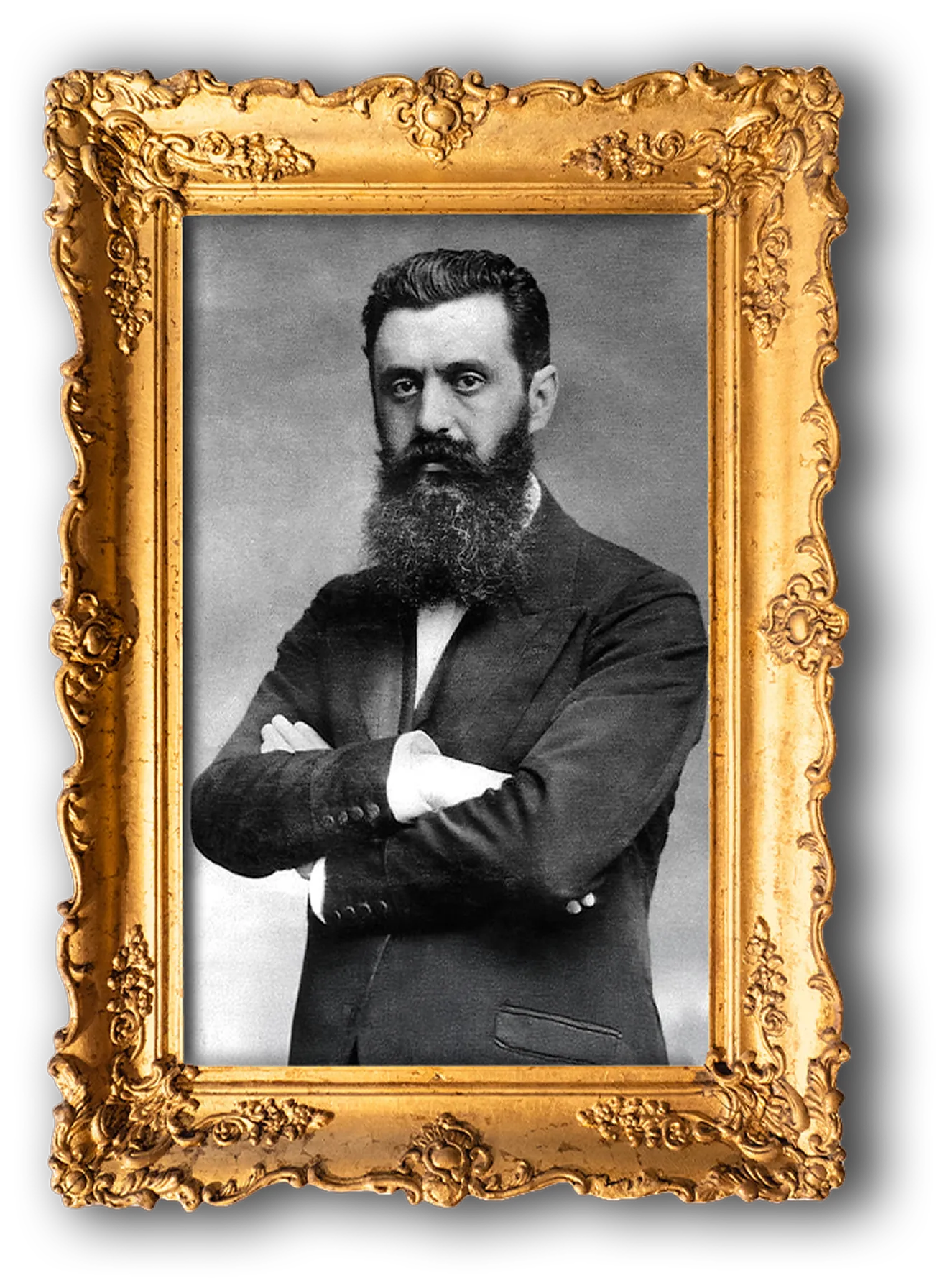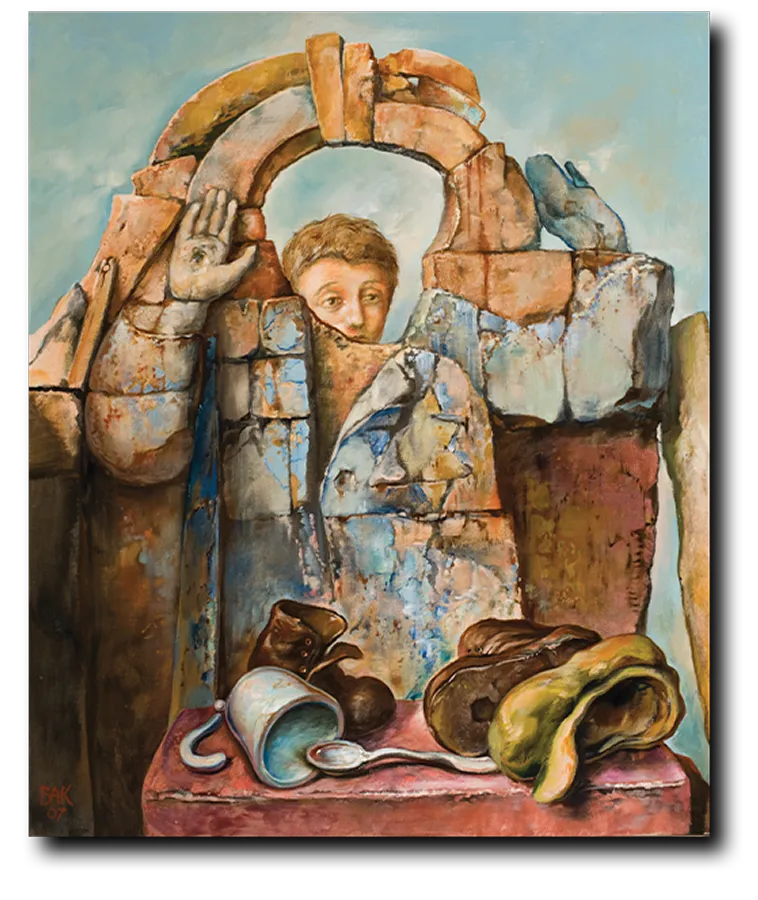A new dawn: jewish life in the enlightement era
The position of the Jews started changing during the Age of Enlightenment (1680-1780). Enlightenment was an intellectual movement to establish human and civil rights. Whilst the Enlightenment was not free of Antisemitism, the movement led to Jewish Communities receiving their civil rights in Western Europe.
Antisemitism now changed. It became a kind of socio-economic envy and an accusation of dual loyalty. Jews were accused of having caused the societal changes some citizens disliked. Many antisemitic accusations and conspiracy theories that still exist originated in that period.
One well-known post-Enlightenment case was that of a Jewish army officer in the French army. Alfred Dreyfus (1859-1935) was accused of treason. Despite his innocence, he was condemned with clearly antisemitic undertones. His innocence was acknowledged only years later.
Dreyfus’s mistrial and ordeal convinced a Hungarian Jewish journalist Theodor Herzl (1860-1904) that there was a need for a Jewish state. Herzl consequently created the organized Zionist movement.
%205.webp)
Breaking Barriers:
Jews Entering Society
Antisemitism now changed. It became a kind of socio-economic envy and an accusation of dual loyalty. Jews were accused of having caused the societal changes some citizens disliked. Many antisemitic accusations and conspiracy theories that still exist originated in that period.
From the Enlightenment on, Jews became a strong cultural and even political element in the European society. Even in Eastern Europe, where Jewish communities were typically more Orthodox, spoke Yiddish and lived more secluded in Jewish villages known as shtetels, there was more openness.
In Germany, many Jews were part of an open-minded Reform movement. Art, literature, music, and science all became fields where Jewish individuals could excel in the society at large. At the same time, Jewish identity was maintained as a religious or cultural identity by for instance communal celebrations of religious holidays.
Synagogues in Europe often had symbols, such as vultures integrated into their decorations. Vultures were symbols of many royal houses, and this was a way to honor them as loyal citizens. This was done in accordance with Jeremiah’s instruction for the Babylonian Exile; later to be modelled in all exiled Jewish communities: “And seek the peace of the city where I have caused you to be carried away captive and pray to the Lord for it…” (Jeremiah 29:7)
A Nation's Shame: The Dreyfus Affair
One well-known post-Enlightenment case was that of a Jewish army officer in the French army. Alfred Dreyfus (1859-1935) was accused of treason. Despite his innocence, he was condemned with clearly antisemitic undertones. His innocence was acknowledged only years later. Dreyfus’s mistrial and ordeal convinced a Hungarian Jewish journalist Theodor Herzl (1860-1904) that there was a need for a Jewish state. Herzl consequently created the organized Zionist movement.

Cultural Tapestry: Jews Shaping the Arts
Icons of Influence: Prominent Jewish Figures
There were notable cases of conversions as well as attempts to show that Judaism could coexist with the Enlightenment and the interwar period.










Courage and Sacrifice: Jewish Soldiers in WWI
By WWI, the nine million Jews of Europe were mostly well-integrated into their societies. During WWI, Jews fought in their national armies in an exemplary way. In Germany itself, approximately 100,000 Jews fought in the German army; many returned as decorated WWI veterans.


Breaking Barriers: Jews Entering Society
It was in 1917 that the Balfour Declaration was given by the British Government opening the way for the establishment of a Jewish State in the British Mandate of Palestine. Arthur Balfour (1848-1930), a respected British statesman wrote a letter to Lionel Walter Rothschild (1868-1937) leader of the Anglo-Jewish Community stating that His Majesty’s Government supported the establishment of a national home for the Jewish people in Palestine.


Struggles and Scapegoats:
The Weimar Republic and Antisemitism





Between Wars:
Jewish Resilience Amidst Rising Antisemitism
The interesting thing to note is that during the interwar period two seemingly opposing trends existed in the society. First, Jews became integrated in the society in an unprecedented manner occupying positions of influence.
On September 1, 1939, she was excited to start 7th grade and see school friends she had missed over the summer. Instead, her mother insisted that she and her brother hide in the basement, as a German bomb had struck the roof of the building where they lived in Radom, Poland.


The Diary That Lived: Anne Frank's Legacy
He moved his family to Amsterdam, Holland. There he met and hired Miep Gies, originally Hermine from Austria. Miep had been sent to Holland as child to escape WWI shortages. She, like Anne Frank, fell in love with Holland and decided to stay – even taking on the Dutch name Miep. Her fate now became connected with that of Anne Frank.
Anne was only a little girl when she came to Amsterdam. No wonder her identity was formed in Holland. She felt she was a Dutch girl.
Anne Frank’s diary of her experiences before and during World War II profoundly impacted the heart of 12-year-old Doris (click here for video) in Germany. Her parents were not happy with Doris’s responses to Anne’s experiences and insisted the book was all lies.





I don't think of all the misery, but of the beauty that still remains.
Use Search at the top of the page and type Anni Albers. Click on her photo. Read the 3 quotes at the top of the page and the Summary of Anni Albers. Scroll down the page to Important Art and read about her piece Six Prayers. You can also click on Artwork Images to see a larger version of the work. After reading and viewing the artwork, silently pause to reflect on the the following questions:
Share your thoughts and ideas as a class.
Type Complete Maus in the search box, then Preview beneath the first entry. Scroll and look at the two book covers, then the two pages that look like comics, pgs. 5 & 6 Read.





